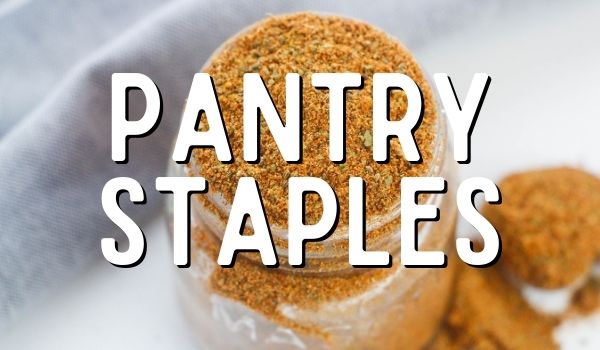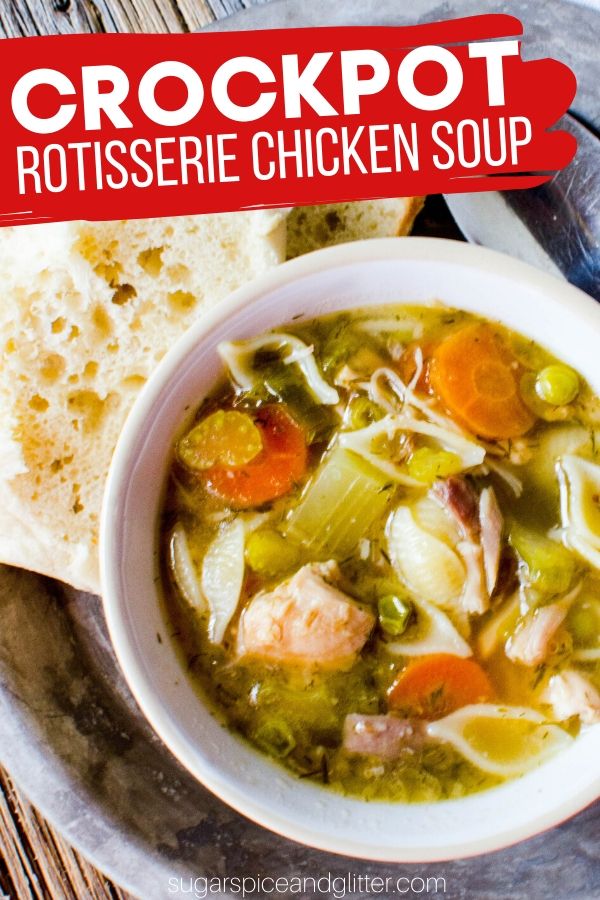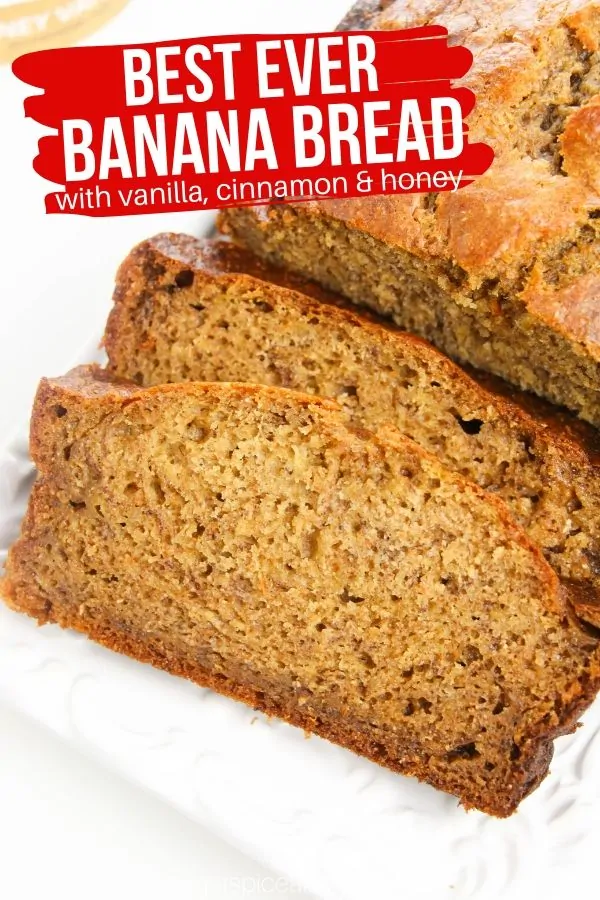Creole Seasoning (with Video)
Today’s easy homemade seasoning recipe brings the zest and an earthy heat to your favorite southern dishes, a Creole Seasoning that is perfect for warming up in winter or celebrating the summer heat.
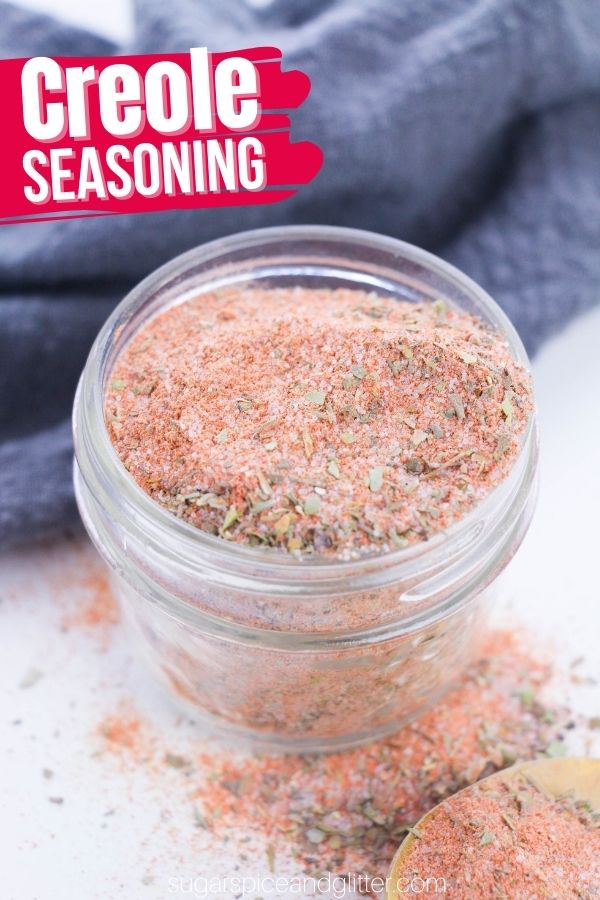
Creole Seasoning Recipe
A few months ago, I shared my recipe for homemade cajun seasoning – and while it may seem redundant to have a separate jar of creole seasoning in my kitchen, I find that each is better suited to different recipes.
While cajun cooking and seasoning tends to be a bit spicier, creole seasoning is more earthy using a variety of herbs to achieve a well-rounded flavor.
Creole is more closely descended from it’s European origins as it was developed for French and Spanish settlers (largely by slaves of African-origin), while Cajun is a mix of influences from Acadians (French Canadians who were uprooted in the 17th century and relocated to the south) and Southern culture – there are many similarities but also distinct ways in which these two New Orleans’ cuisines differ.
A few examples of how cajun and creole cuisines differ include:
- Creole recipes uses more butter while cajun seasoning uses more lard and oil because it was shelf-stable and more readily available in the countryside locations where Cajun people resided.
- Creole cuisine features more rich sauces and stews because that suited a European palette.
- Creole food uses tomatoes – once an imported and exotic ingredient – while “proper” cajun food does not.
These subtle differences are also reflected in which seasoning to use. For cajun dishes, you want more warmth, blackening spices and pepper. For creole dishes, you want a bit of that provencal earthiness that personifies European dishes but still with a bit of heat reflective of it’s southern origins.
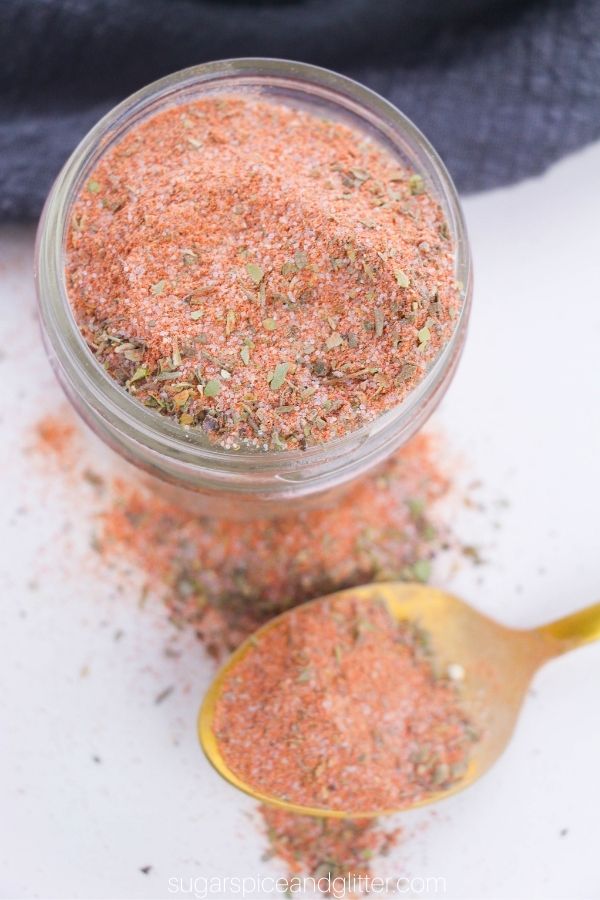
The best cost savings with this recipe is to purchase your spices from a bulk store, or if that’s not an option, buy the large containers of the individual spices and herbs. Buying the little containers to make this seasoning would be crazy expensive (but ironically, still cheaper than using the seasoning packets).
This Creole seasoning is shelf-stable for up to a year, as long as you use fresh (dried) herbs and spices when you make it and store in a cool, dry spot in your kitchen.
This seasoning is gluten-free, paleo, low-carb and vegan and makes a great homemade gift.
What is Creole seasoning? Creole seasoning is a zesty and spicy seasoning blend used in traditional Cajun recipes. Our version is made with a variety of common seasonings: onion powder, garlic powder, oregano, basil, thyme, a trio of peppers, paprika and salt.
Some versions also incorporate rosemary, sassafras (file), lemon peel or mustard powder so there is some flexibility to make this seasoning your own by experimenting with it.
Can I use creole seasoning in place of cajun seasoning? Yes! Creole seasoning tends to have a bit more oregano and thyme, but other than that, the mixtures are pretty similar. (It’s the actual recipes that they are used in that tend to differ.)

Need some inspiration for how to use your Creole seasoning? Check out these recipes for how to use creole seasoning:
- Shrimp and Sausage Gumbo
- Easy Shrimp Cakes from My Crazy Good Life
- Crawfish Beignets from One Dish Kitchen
- Shrimp Creole from Pinch and Swirl
- Cheesy Hot Jambalaya Dip from Cupcakes and Kale Chips
- Southern-Style Smothered Potatoes from Recipes From a Pantry
- Creole Green Beans from Flavor Mosaic
- Zesty Creole Remoulade from Dish’n’the Kitchen
- Low Carb Seafood Foil Packs from Low Carb Quick
- Seafood Pot Pie from 4 Sons R Us
- Zesty Louisiana Creole Coleslaw from Laure Fuentas
You can also use it on seafood, homemade french fries or potatoes, chicken wings, breaded chicken tenders, or in soups. The options are endless!
Check out our quick recipe video to see how easy it is to whip up our homemade creole seasoning and then don’t forget to scroll down to grab your free printable recipe card:
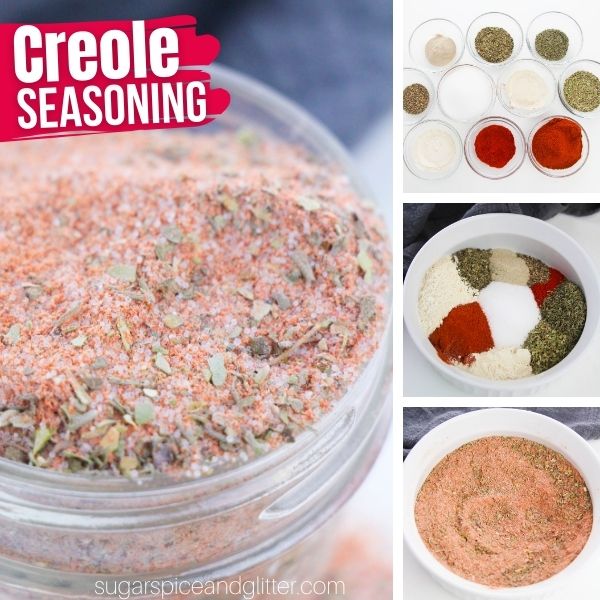
Creole Seasoning Ingredients
- Onion Powder
- Garlic Powder
- Dried Oregano
- Dried Basil
- Dried Thyme
- Black Pepper, crushed
- White Pepper
- Cayenne pepper
- Paprika
- Salt
Scroll down to the printable recipe card for full measurements.
Tip: omit the salt if you’d prefer to have a bit more control over the sodium content in your recipes.
Kitchen Tools You May Find Helpful
- Spice Grinder
- Measuring spoons
- Mason jars, for storing – I do not recommend plastic jars as they can hold moisture and you want to keep this seasoning mix dry to preserve freshness
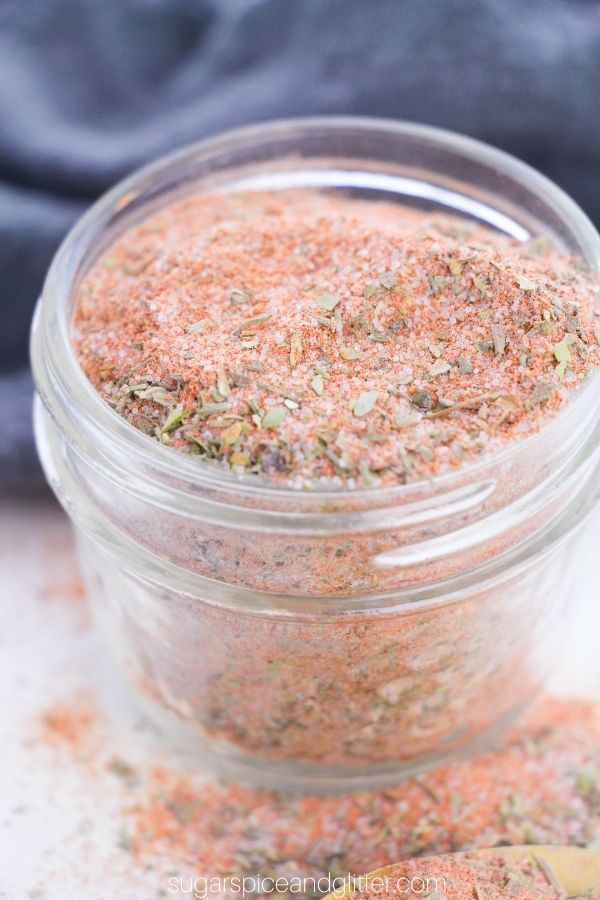
How to Make Creole Seasoning
Place all spices in a small bowl and whisk to combine.
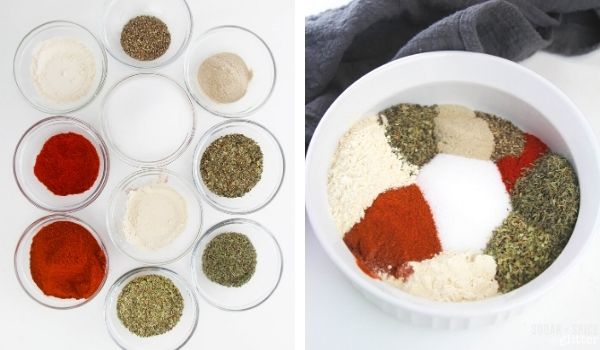
Store in an airtight jar for up to 1 year.
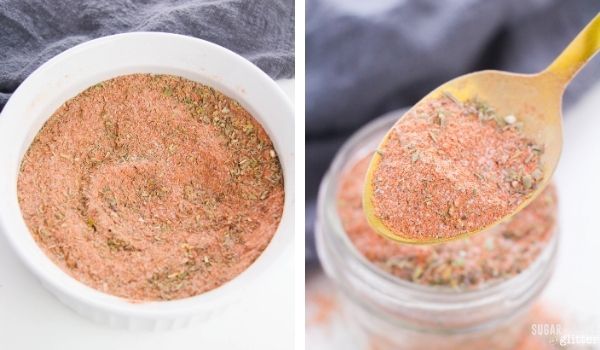
Pin this Easy Creole Seasoning to spice up your pantry:
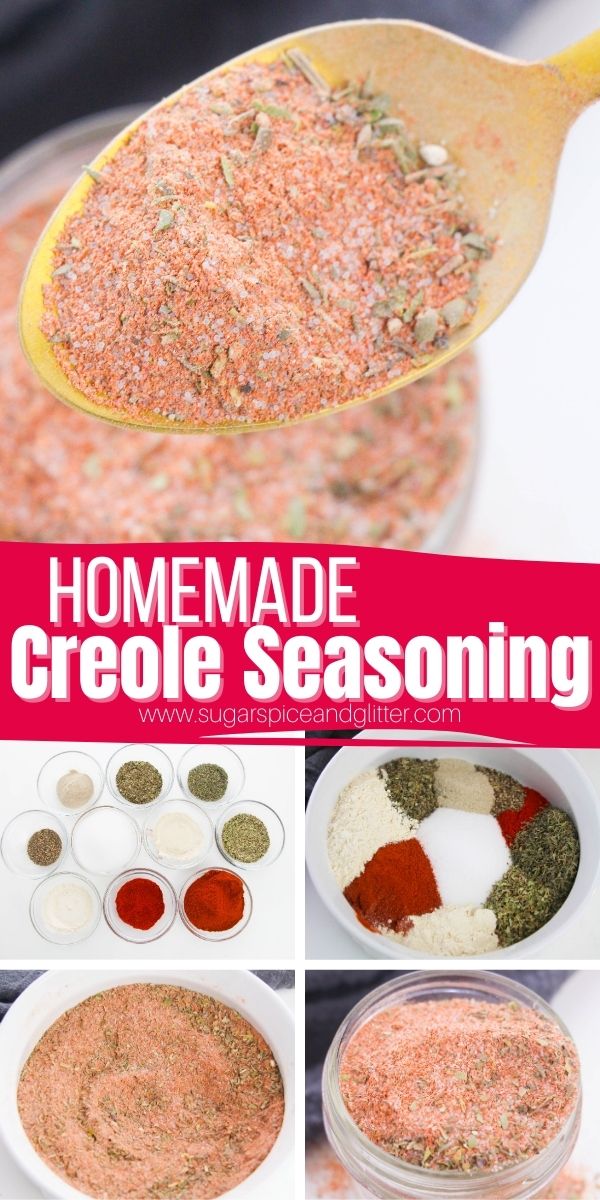
Grab your free printable recipe card for our homemade creole seasoning recipe:
Want to Save This Recipe?
Enter your email & I'll send it to your inbox. Plus, get great new recipes from me every week!
By submitting this form, you consent to receive emails from Sugar, Spice and Glitter.
Creole Seasoning
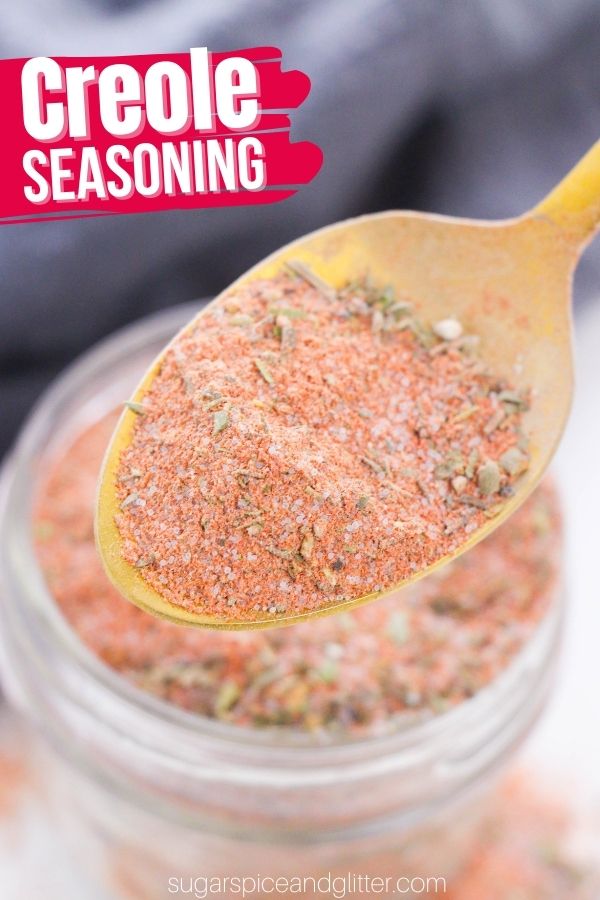
An earthy, zesty and spicy blend perfect for adding warmth and flavor to your favorite southern recipes, this Creole seasoning is super simple to whip up and lasts for up to 6 months.
Ingredients
- 1 Tablespoon onion powder
- 1 Tablespoon garlic powder
- 1 Tablespoon dried oregano
- 1 Tablespoon dried basil
- 1/2 Tablespoon dried thyme
- 1/2 Tablespoon black pepper, crushed
- 1/2 Tablespoon white pepper
- 1/2 Tablespoon cayenne pepper
- 2 1/2 Tablespoons paprika
- 1 1/2 Tablespoons salt
Instructions
- Place all spices in a small bowl and whisk to combine.
- If desired, blitz in a blender or spice grinder to achieve a uniform texture.
- Store in an airtight jar for up to 1 year.
Recommended Products
As an Amazon Associate and member of other affiliate programs, I earn from qualifying purchases.
-
Chiquilin Mild, Smoked and Hot Spanish Paprika Set (Pack of 3)
-
VERONES Mason Jars Canning Jars, 4 OZ Jelly Jars With Regular Lids and Bands, Ideal for Jam, Honey, Wedding Favors, Shower Favors, Baby Foods, DIY Magnetic Spice Jars, 16 PACK,Extra 16 Lids
-
Hamilton Beach Fresh Grind 4.5oz Electric Coffee Grinder for Beans, Spices and More, Stainless Steel Blades, Black (80335R)
Nutrition Information:
Yield:
30Serving Size:
1Amount Per Serving: Calories: 5Total Fat: 0gSaturated Fat: 0gTrans Fat: 0gUnsaturated Fat: 0gCholesterol: 0mgSodium: 318mgCarbohydrates: 1gFiber: 0gSugar: 0gProtein: 0g
Sugar, Spice and Glitter uses an auto-generate nutrition calculator. Nutrition information isn’t always accurate unless analyzed in a scientific lab, so these should be considered more of a guideline than medical information.
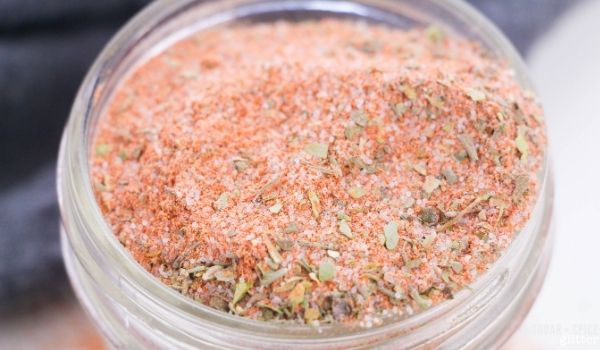
I hope you love this easy creole seasoning blend – I’d love to hear what recipes you end up using it in!
For more homemade seasonings and other kitchen staples, check out our full collection of homemade pantry recipes here:




